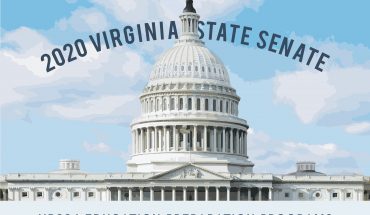BY LUKE HARRIS STAFF WRITER
Low-cost education is hard to come by. Good low-cost education is even rarer. Great low-cost education is nearly impossible to get. But I got it. Attending Northern Virginia Community College gave me a window into what community college actually was rather than what I was told it would be. Sadly, the community college option for higher education is so stigmatized that it’s the butt of many jokes.
That stigma leads many high school students to cross community college off the list of where they might go. I certainly did. After four years of hearing people degrade community college in high school, there was no way I was going to end up there.
I heard all the same jokes that shined a light on how some kids think about community college. “I’ve got to pass this AP exam or else I’ll end up at community college,” laughed some peers. The worst statement was from one peer who said, “Don’t go to community college, that’s where the failures go.”
He was exactly the type of kid you would expect: A grade-obsessed, elitist brat that could only see his future through the Ivy League lens. It was hard to block his voice out when he spoke about community college the same way I heard others speak about it. I didn’t want to listen to him, but I did.
Without knowing where I wanted to go, I randomly selected a four-year university to attend after high school. Within the first two weeks of attending, it became clear I didn’t fit in and needed to get out. When sophomore year came around, I returned home — having burned through thousands of dollars of college savings and still no idea where I needed to go next. With a sigh, I enrolled myself in community college.
My experience with community college stigma isn’t an anomaly. The stigma has existed for a long time and has even sparked campaigns to fight it. People need to know that the major negative stereotypes about community college aren’t true.
One myth is that community college offers poor education compared to four-year universities. But while four-year professors are distracted by research grants, community college teachers give more time to students. I’ll take a dedicated teaching staff over professors with a prestigious resume any day.
A fairly strange myth I’ve heard is that community college students are lazy and uncommitted. Yet nearly half of people who earn bachelor’s degrees first attended community college. This proves that community college students have the academic capabilities for a four-year university. They just chose a different route to get there.
Another myth is that successful people don’t go to community college. This is consistently disproven as former community college students have gone very far in their professional efforts. Supreme Court Justice Arthur Goldberg, NASA astronaut Eileen Collins and Steve Jobs attended community college. Even Oscar winners Tom Hanks, Clint Eastwood and Halle Berry spent time at community college.
These people are living proof that a community college education is not a career death sentence. It’s about where you let your education take you and not about how you let your education define you.
When I was in class at community college, I could look to my right to see a working mother and look to my left to see a high school student getting ahead on college credits. This wide array of students only reinforces the notion that education is essential, regardless of your age.
Mason students have a great opportunity to be leaders in destigmatizing community college. Great programs like ADVANCE help provide clear pathways for Northern Virginia Community College students to attend Mason. Of Mason transfer students, 78 percent came from Virginia community colleges in 2019.
Overcoming community college stigma may be hard, but it is needed. Learning should never be stigmatized. It should be encouraged. There is great, low-cost education to be found in this world. We just need to let students know that community college isn’t settling: It’s giving them agency to direct their futures.



